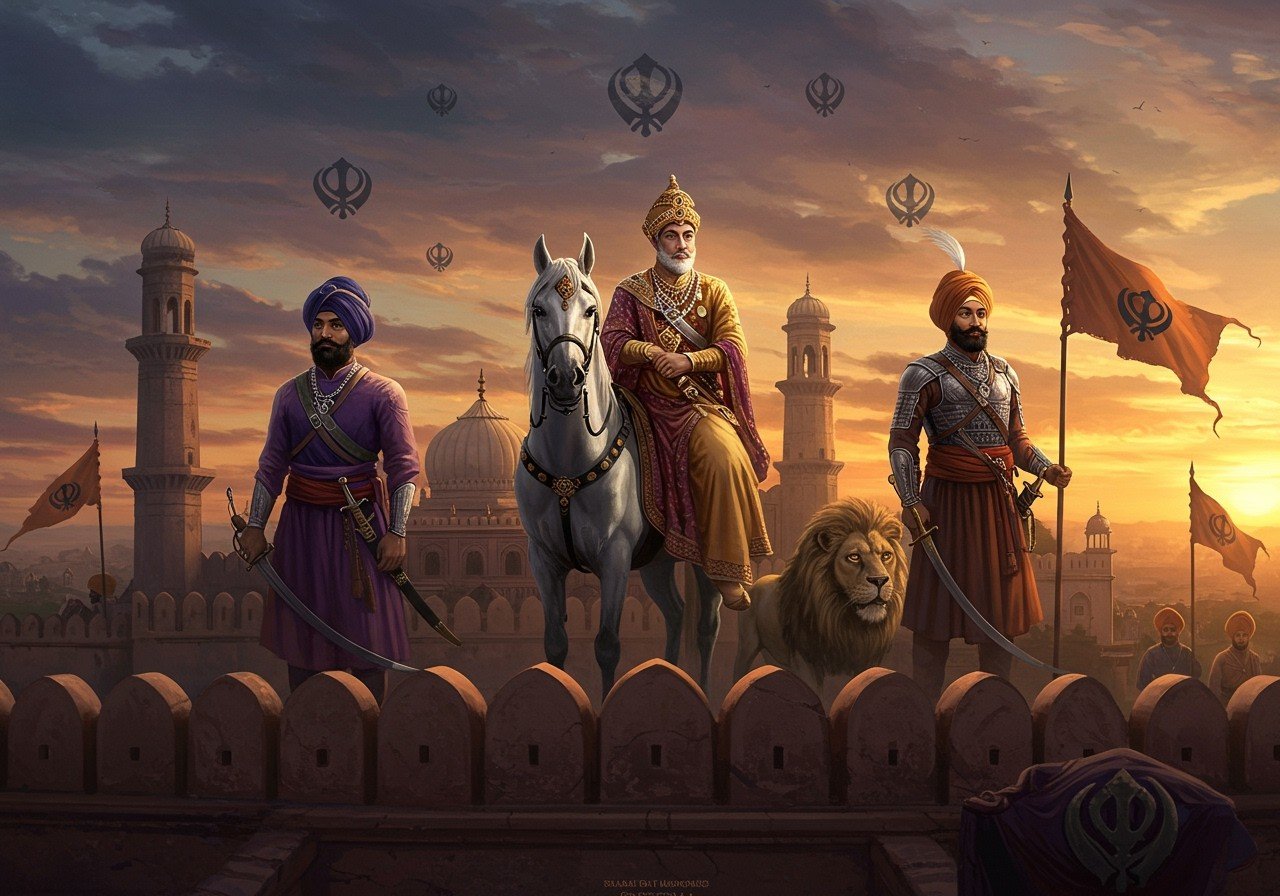
The Sikh Empire, a powerful kingdom in the Indian subcontinent, flourished from 1799 to 1849. Founded by the charismatic Maharaja Ranjit Singh, it unified the Punjab region and left an enduring mark on the region’s history, culture, and religious landscape. This blog delves into the empire’s rise, its key figures, and its lasting legacy.
The Rise of the Sikh Empire
Before Maharaja Ranjit Singh’s reign, the Punjab region was fragmented, marked by internal conflicts and external threats. Ranjit Singh, a brilliant military strategist and a visionary leader, consolidated the Sikh misls (confederacies) into a unified force. His strategic alliances and decisive military campaigns laid the foundation for a powerful and centralized Sikh state.
Maharaja Ranjit Singh: The Lion of Punjab
Maharaja Ranjit Singh (1780-1839), often referred to as the “Lion of Punjab,” stands as the most iconic figure of the Sikh Empire. From his rise to power at a young age to his remarkable military achievements, his life is a testament to courage, ambition, and leadership. He not only expanded the empire’s territories but also implemented administrative reforms, modernizing the military and establishing a secular government that promoted religious tolerance.
Key Figures of the Sikh Empire
The Sikh Empire’s success wasn’t solely due to Ranjit Singh. Other notable figures played crucial roles in shaping its destiny:
- Sardar Hari Singh Nalwa (1791-1837): A distinguished general and administrator, Nalwa was instrumental in expanding the empire’s northwestern frontier. He led successful campaigns against Afghan forces and played a key role in consolidating Sikh control over vast territories.
- Raja Mahan Singh Mirpuri: A prominent general known for his military acumen, Mahan Singh Mirpuri contributed significantly to the empire’s military strength and expansion.
- Baba Banda Singh Bahadur (1670-1716): Although predating the formal establishment of the Sikh Empire, Banda Singh Bahadur’s rebellion against Mughal rule and his establishment of a short-lived Sikh state in parts of Punjab laid important groundwork for the later emergence of the empire.
Cultural and Religious Influence
The Sikh Empire was not merely a political entity; it was a center of cultural and religious flourishing. Sikhism, with its emphasis on equality, justice, and devotion, permeated the empire’s social fabric. The patronage of the arts and literature further enriched the cultural landscape.
Decline and Legacy
Following Maharaja Ranjit Singh’s death in 1839, the Sikh Empire faced internal strife and increasing pressure from the British East India Company. A series of Anglo-Sikh wars ultimately led to the empire’s annexation by the British in 1849.
Despite its relatively short lifespan, the Sikh Empire’s legacy remains profound. It stands as a testament to the power of unity, the importance of religious tolerance, and the enduring spirit of a resilient community.
Explore Sikh Heritage with Poojn.in
At Poojn.in, we understand the significance of preserving and celebrating cultural heritage. We offer a wide selection of spiritual and cultural products that can help you connect with the rich traditions of the Sikh faith. Explore our collection of exquisite idols, religious texts, and puja accessories, all crafted with utmost care and reverence. Visit www.poojn.in today and discover the perfect items to enhance your spiritual journey.
For those interested in learning more about Laddu Gopal, we recommend our comprehensive guide: A Complete Guide to Laddu Gopal: 10 Essential Facts You Need to Know. And if you’re seeking beautiful Radha Krishna idols for your home or temple, explore our collection: Radha Krishna Bigraha and Astadhatu Brass Radha Krishna Murti.


